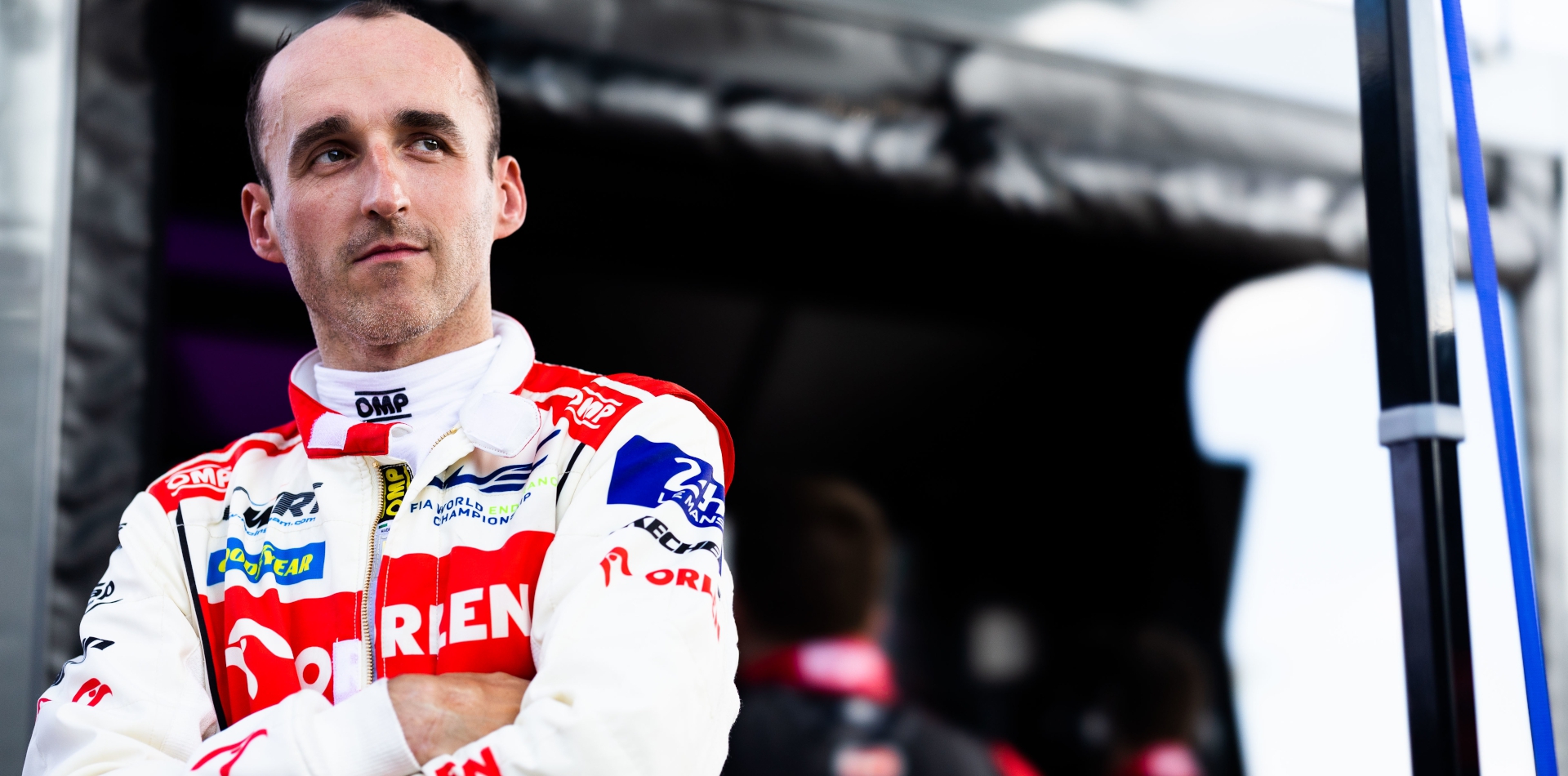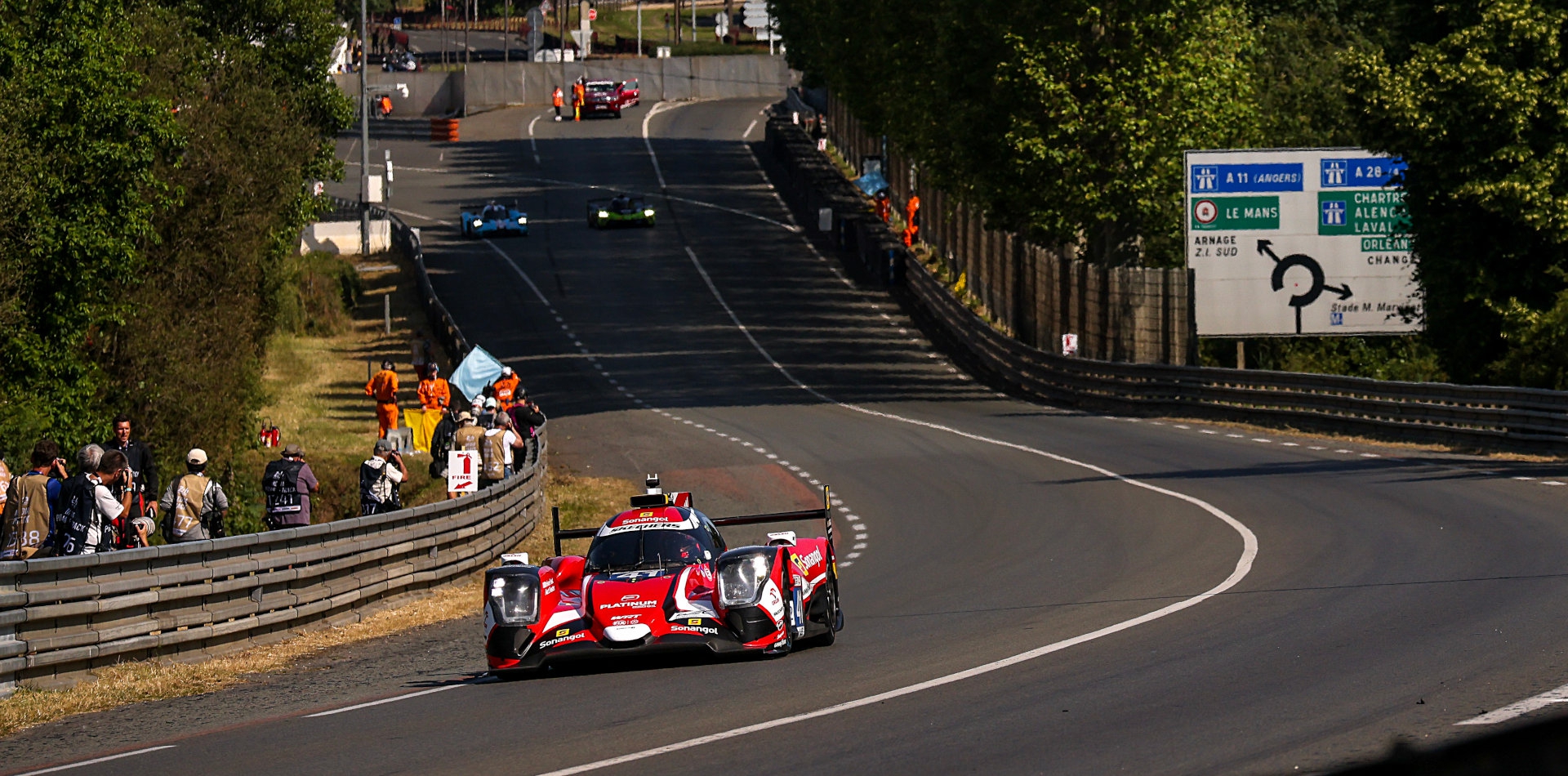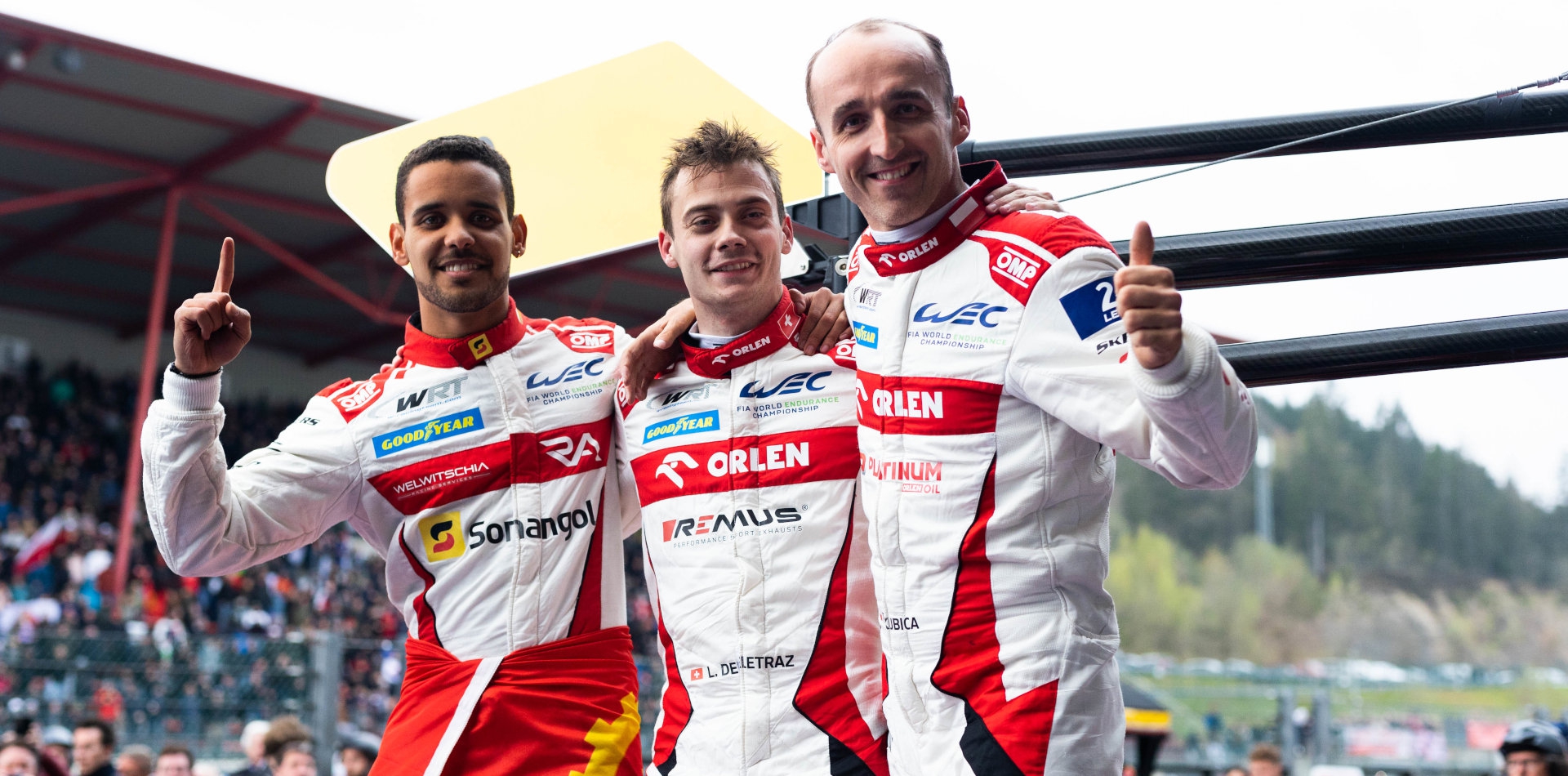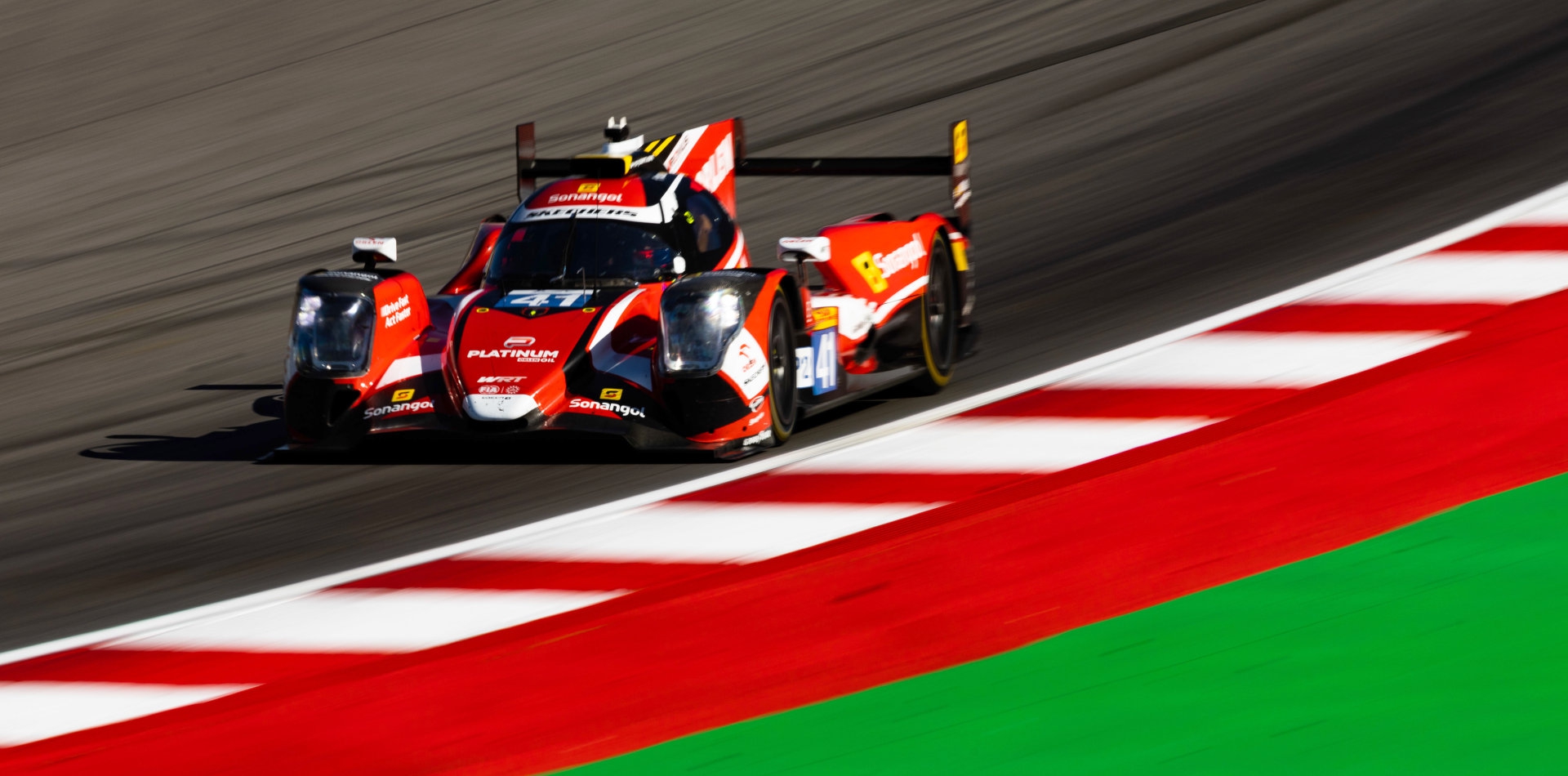
Robert Kubica is definitely one of the most beloved characters in the motorsport community. This is not only because of his enormous talent, that he showed in Formula 1 as well as in rallies, but also thanks to his great human qualities. OMP has had the pleasure of collaborating with the Polish driver on several occasions, including his current commitment in the FIA World Endurance Championship with Team WRT.
The Belgian outfit is the same with which Robert won the 2021 European Le Mans Series title, kicking off its chapter in endurance racing in the best possible manner. The 24 Hours of Le Mans, one of the most prestigious races on the motor racing scene, is the most eagerly awaited round on the FIA WEC calendar: the 2023 edition, which will mark the Centenary anniversary, is getting closer and will be the third in Kubica's career. He is again among the the LMP2 class top contenders, sharing the #41 car with Louis Delétraz and Rui Andrade.
We spoke with Robert to know his feelings at the eve of the race, what he discovered competing in this fascinating discipline and to relive together the most significant moments with OMP.
Robert, you are ready for your third 24 Hours of Le Mans: what does it represent for you?
"Racing here is a unique challenge. Endurance racing requires a different approach, and not just in terms of duration: preparation starts much earlier, as we arrive at the track ten days before. I would define the 24 Hours as a kind of Olympic Games for motorsport, it's something like no other. To fully understand it you have to try it, it's a tricky event in which any pitfall can occur, and in which something can happen at any minute. You must pay respect to this race, it should not be tackled with too much confidence. An error can always be around the corner, and it's better to be thoughtful. A lack of concentration, both from the driver or from the team crew, can be very costly in terms of result. And now even more, because the reliability level reached by the cars enables us to keep a very quick pace for the whole distance."
As a very versatile racer, what do you appreciate more about this motorsport discipline?
"It was a slightly different world for me initially, first of all for sharing the wheel with other drivers. In the past, I always considered my teammate as a rival, even if we were collaborating outside the car. In endurance, you have to change your mindset. We work for each other. On a human level, endurance racing strengthens ties between people, especially the 24 Hours of Le Mans due to the commitment it demands. It's something in the middle between circuit racing and rallying, because you are much closer to the fans, the other drivers and the team. In endurance, to work well and get good results, being selfish never pays."

You have been able to sample many different cars during your career. What makes the LMP2 prototypes stand out?
"Any vehicle with four wheels and a steering wheel poses a challenge, when you have to drive it to the limit. This is the most beautiful side of my job: whether it's a Formula 1, a kart or a prototype, there's no difference. In races like the 24 Hours of Le Mans you always face different conditions. There is a change in temperatures between day and night, at least, even when the weather remains stable. The LMP2s are designed for greater driveability, rather than for the performance peak, and the drivers really like this. Oreca has done a fantastic job."
The LMP2 class is probably the hardest fought on the grid, but with Team WRT you arrive on the wave of the 6 Hours of Spa victory.
"At the 24 Hours there will be 24 LMP2 prototypes, with the addition of some entries from the European Le Mans Series. This car has been in use for many years, so all the teams and drivers know it very well, and when there is calendar, tires and regulations stability, the gaps get slimmer. In the FIA WEC we normally have eight crews capable of fighting at the top, the level is very high. In any category and with any car, anyhow, winning the 24 Hours of Le Mans is still a huge task. Taking the chequered flag without problems is already worthy of applause, but history remembers only the winners... and then we hope we'll be remembered!"
How important is the relationship with the Team WRT? You are again together after the 2021 experience.
"When you say “we win and lose together" you are using a stock phrase. That's the truth, even more so when talking about the 24 Hours of Le Mans. The team plays a crucial role in setting the car, and then obviously during the race with strategy and pit-stops. The mechanics are under a greater pressure than usual, and it is easier for everyone to make mistakes. This race brings the whole team to the limit, and this is what creates the bond: we depend on each other. At the beginning of the year we were not at 100 percent, but in the last two races we made a lot of progress. We won at Spa, but Le Mans is another story."

Both you and Team WRT have a long history of collaboration with the OMP brand. What do you like about the products you are wearing this year?
"I used my first OMP suit in 1998, when I was racing in karts with the CRG Grifone team. As a driver I have changed many categories and many teams, and in 25 years I have often found OMP to equip me. In 2010 we were together in Formula 1, and we worked hard to develop the shoes: I was a bit of a pain in the neck at that time, my main goal was to have greater comfort, and since then OMP shoes have made huge strides forward, and they become very popular in the various championships. If the product has had such success, it means that it was, and still is, very good: I'm not saying it's all my credit, but I think I gave a bit of help!"
If Ayrton Senna for OMP was fundamental for the gloves' development, and Michael Schumacher for the suits, you were the shoes' master. You are well-known for being a very skilled test driver, but you also proved to be a champion in racewear R&D!
"The shoe represents a very personal item for the driver, but sometimes it is a bit underestimated. It is believed that it is only useful to press the throttle and the brake pedal. However, it must offer the right sensitivity and the right stiffness. Inside of Formula 1 cockpits, as inside of prototype cars as well, temperatures can be really hot: the shoe must therefore be both resistant and comfortable, without causing pain to the foot, which is a very sensitive part of the body."

Every detail is crucial for pursuing the best result.
"In motorsport the search for progress is unstoppable, and it's incredible how a suit or a glove can evolve over time. We are looking for more comfort, but above all for greater protection, an aspect that we often forget. FIA regulations made the suits much safer, but the competition also asks you not to take any steps back in terms of weight, comfort and breathability. Looking at the overalls, they always look the same, but there's a lot of work behind the scenes: when you think your product is the best one, you're already losing. Just like on the track, you have to push yourself every day to go further."
You have also been using the Bell helmet, another product from Racing Force Group, for many years.
"We go back to 2010 again! That year I also chose the helmet of Bell, which at the time was not yet part of the same group of OMP. The first thing that impressed me was the internal ventilation, clearly better compared to the previous model which I was wearing. At that time I was suffering a lot from the heat inside the helmet, so I immediately noticed huge benefits. In endurance racing, cooling is less important, but when you feel comfortable with a product, and with a group that supports you, you don't want to change. The collaboration goes beyond the product itself: it's nice to be aware that in case of need there is someone ready to help you. This is what I felt with OMP and Bell, which now are part of Racing Force Group. I have partners I can always rely on, and that makes the difference."




